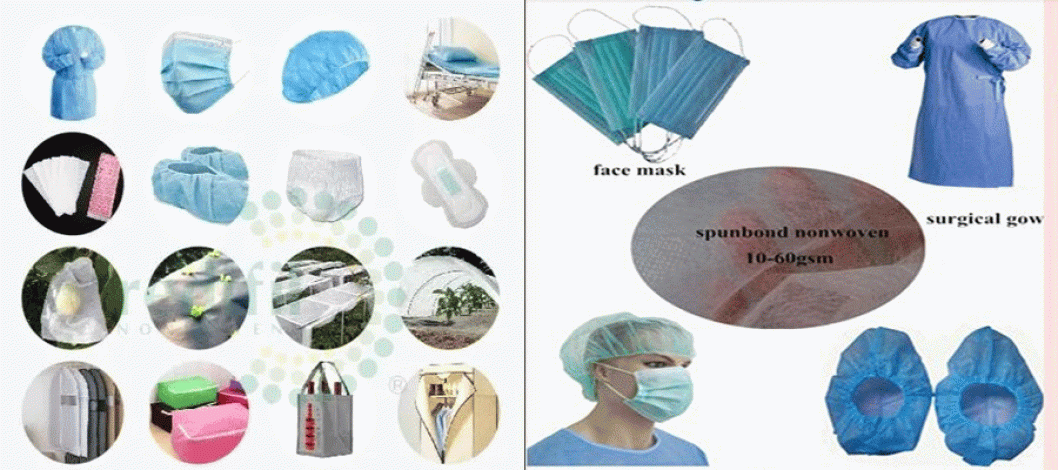
Here's a more detailed look at why nonwoven products are so important:
1. Innovations in Nonwovens: Versatility is the Key
The applications for nonwovens
continue to expand immensely due to the wide range of functional performance
properties it is possible to engineer into them. From single-use, disposable
products to durable and hard-wearing components for many industries, the
flexibility of nonwoven fabrics ensures that they have a central role in life
today.
The applications for nonwovens
continue to expand due to the wide range of functional performance properties
that are possible to engineer into them. The term ‘nonwoven’ - describing
something that a product is not, as opposed to what it actually is - has never
accurately represented its industry, but any attempts to replace it over the
years have floundered.
A nonwoven is defined by ISO
standard 9092 and CEN EN 29092 as: “An engineered fibrous assembly, primarily
planar, which has been given a designed level of structural integrity by
physical and/or chemical means, excluding weaving, knitting or paper making.”
As such, nonwovens differ from
other textiles, being turned from fibres or polymer resins directly into
fabrics, with bonding of the web by various methods - chemical, mechanical, or
thermal - replacing the weaving or knitting together of the yarns in
traditional textiles.
The elimination of a yarn
spinning stage means nonwoven production is fast and cost-effective, and many
years ago, these materials were seen as low-price substitutes for traditional
textiles, which is far from the case today.
2. Versatility and Adaptability:
Nonwoven fabrics can be
engineered with a wide range of properties, including absorbency,
breathability, strength, flame retardancy, and biodegradability.
They can be produced using
various methods, including chemical, thermal, and mechanical bonding, allowing
for customization based on specific needs.
Their flexibility allows them to
be used in diverse applications, from disposable hygiene products and medical
supplies to durable goods like geotextiles and vehicle components.
3. Cost-Effectiveness and Efficiency:
Nonwoven production is generally
faster and more cost-effective than traditional textile manufacturing because
it eliminates the need for yarn preparation steps.
The ability to produce fabrics
with specific properties at a lower cost makes them attractive for various
industries, including hygiene, healthcare, and construction.
4. Environmental Considerations:
Many nonwoven fabrics are made
from natural fibers like cotton and hemp, which are biodegradable, making them
an environmentally friendly option.
The use of nonwovens can help
reduce waste, particularly in disposable applications, and can contribute to
environmental protection.
Recycled nonwoven fabrics also
help repurpose materials that would otherwise end up in landfills.
5. Growing Market and Applications:
The global nonwovens market is
experiencing significant growth, driven by increasing demand in various
sectors, including healthcare, hygiene, and construction.
Nonwoven products are increasingly
used in personal care items, medical disposables, and industrial applications,
contributing to their overall importance.
The versatility of nonwovens
allows for innovation and the development of new applications, further driving
market growth.
From single-use, disposable
products to durable and hard-wearing components for many industries, the
flexibility of nonwoven fabrics ensures they have a central role in life today.
They contribute considerably to
personal health, cleanliness, hygiene, and well-being in a wide range of
convenient and discrete forms, whether as AHPs, wipes, or medical disposables,
and their essential contribution to fighting the COVID-19 pandemic has been
well-documented.
At the same time, in durable
forms, they provide landscape and infrastructure protection as geotextiles,
promote crops and agriculture as crop covers and nutrient providers, reduce
weight and emissions in many vehicle components, and, as filter media, continue
to improve the quality of air and water around the world.
In conclusion, the importance of
nonwoven products is undeniable due to their versatility, cost-effectiveness,
and growing range of applications across various industries, making them a key
component in modern life.
- SZK, based on online information
Comment Now